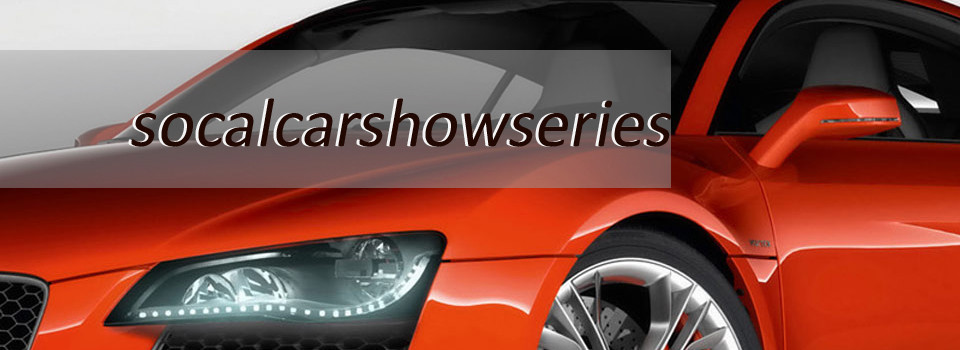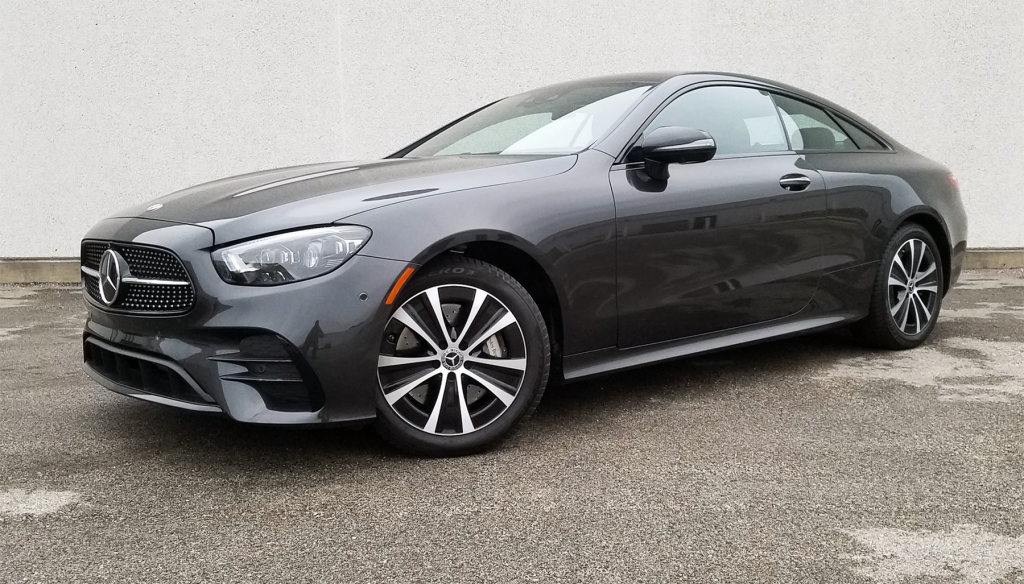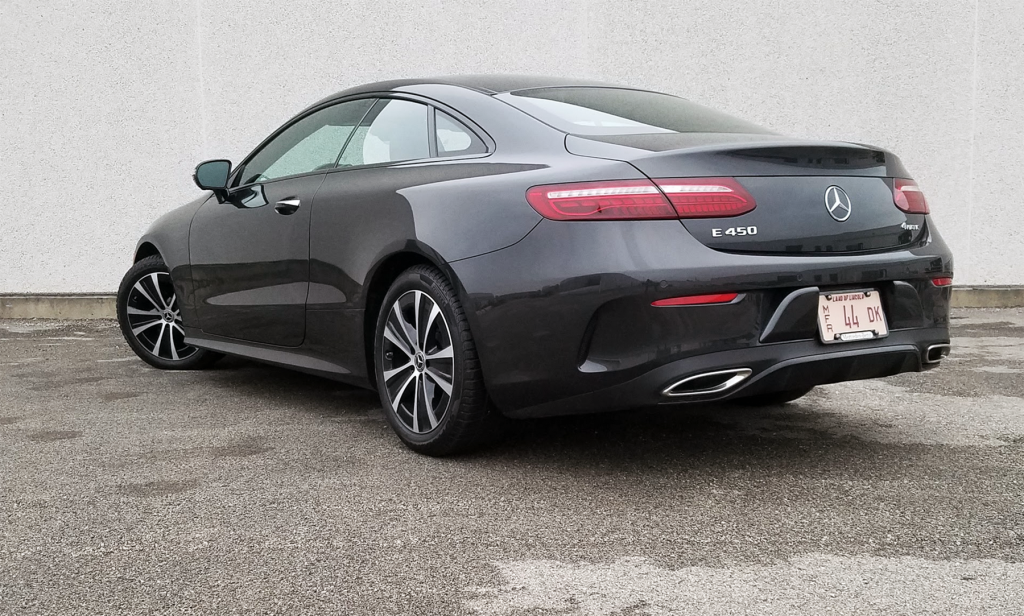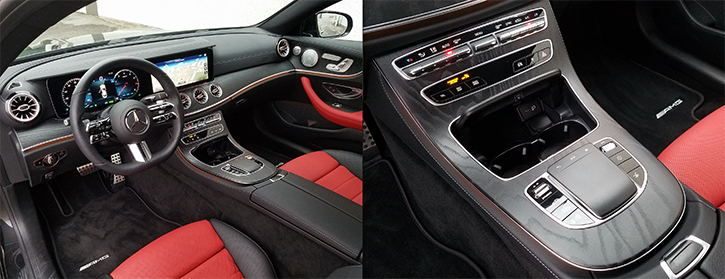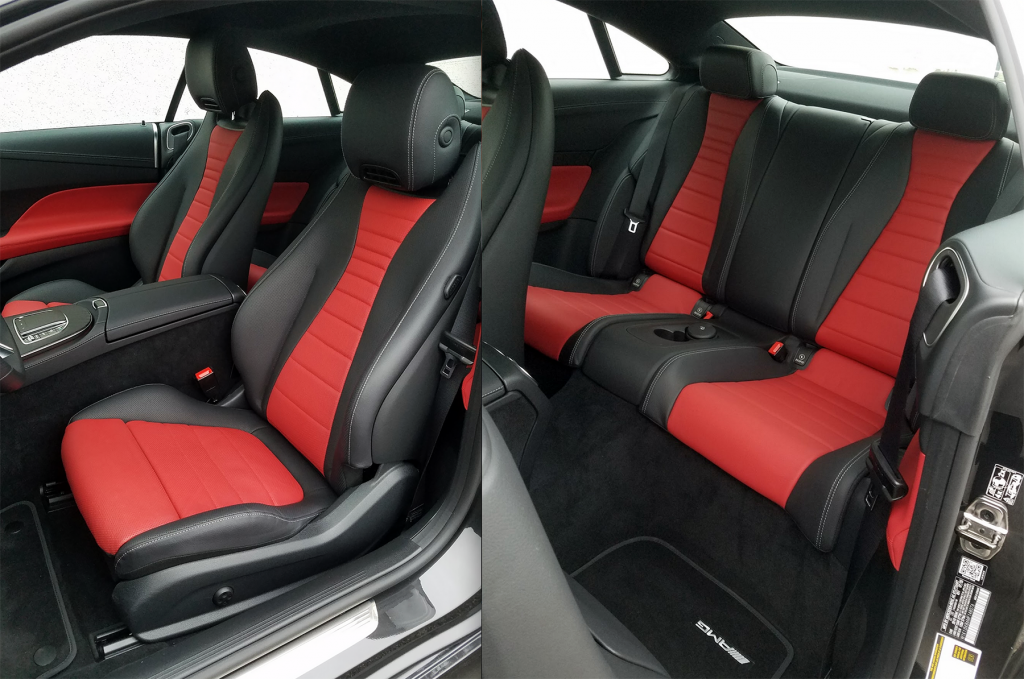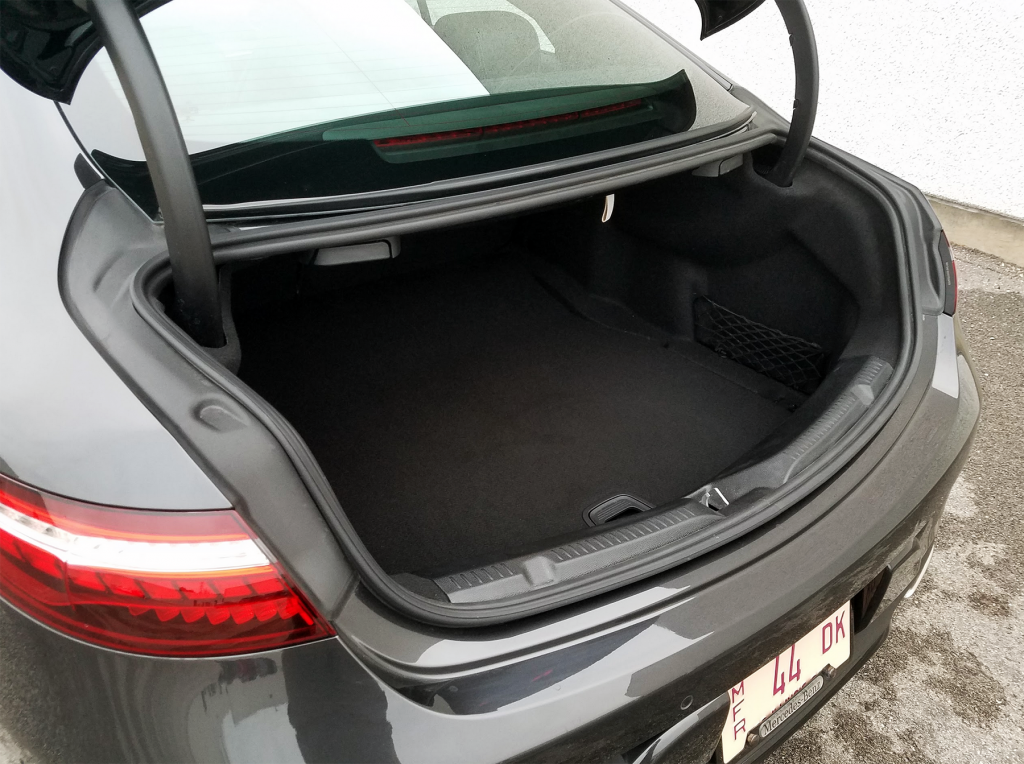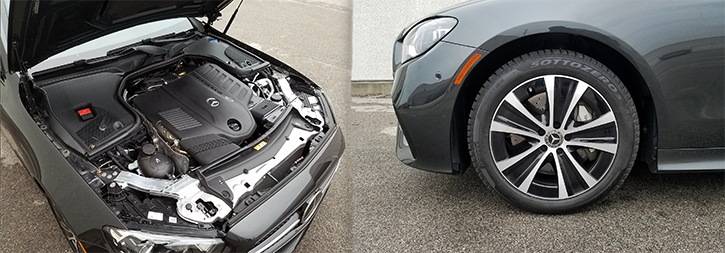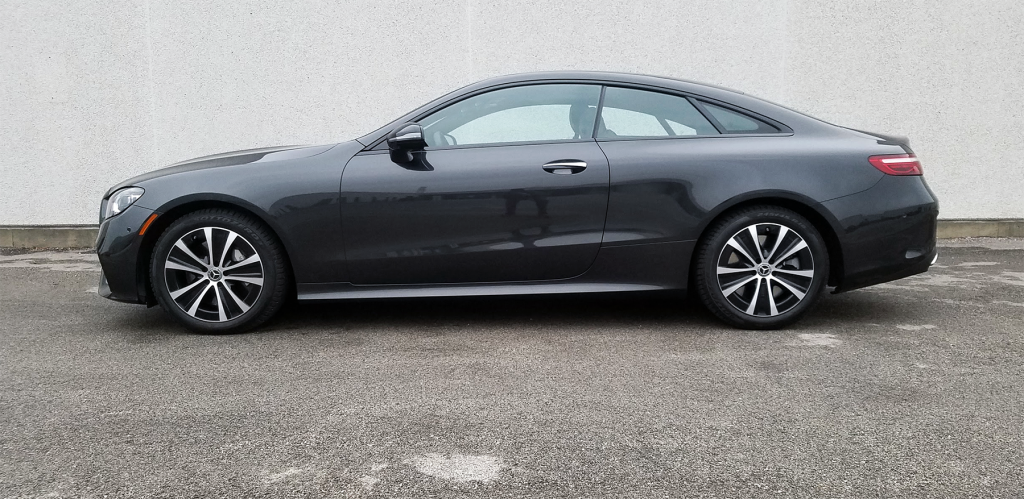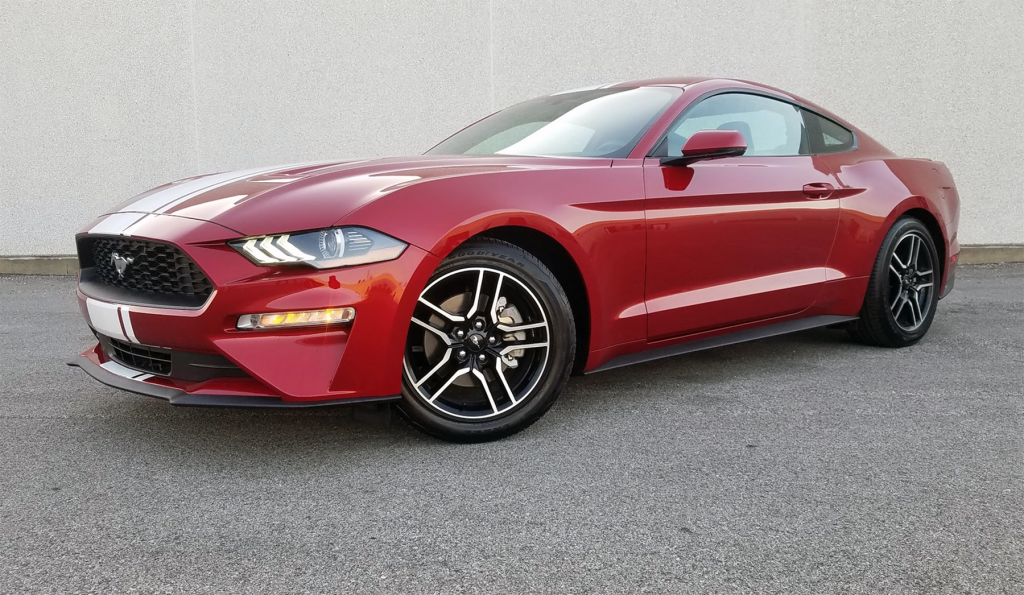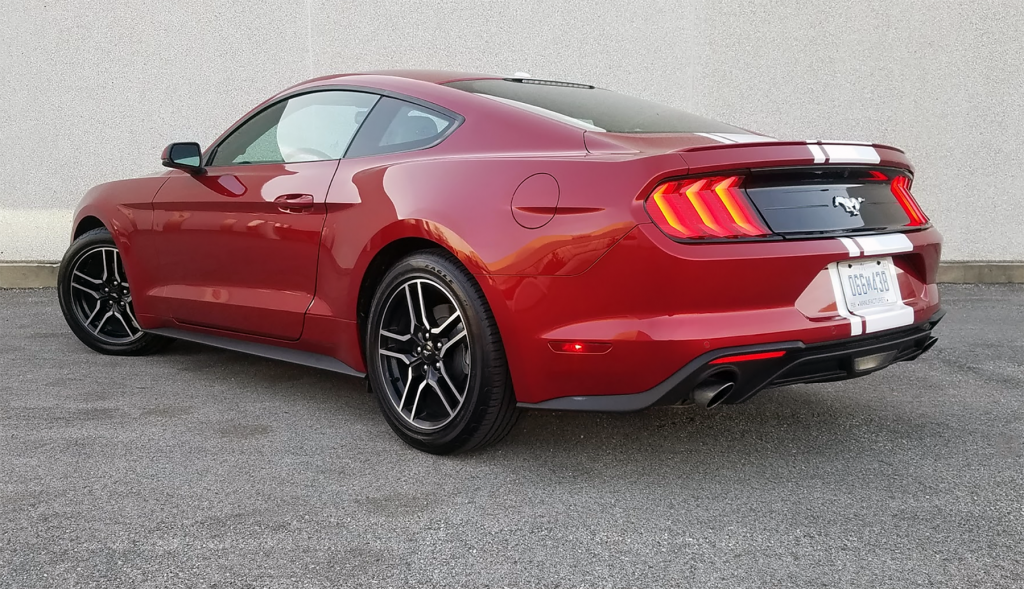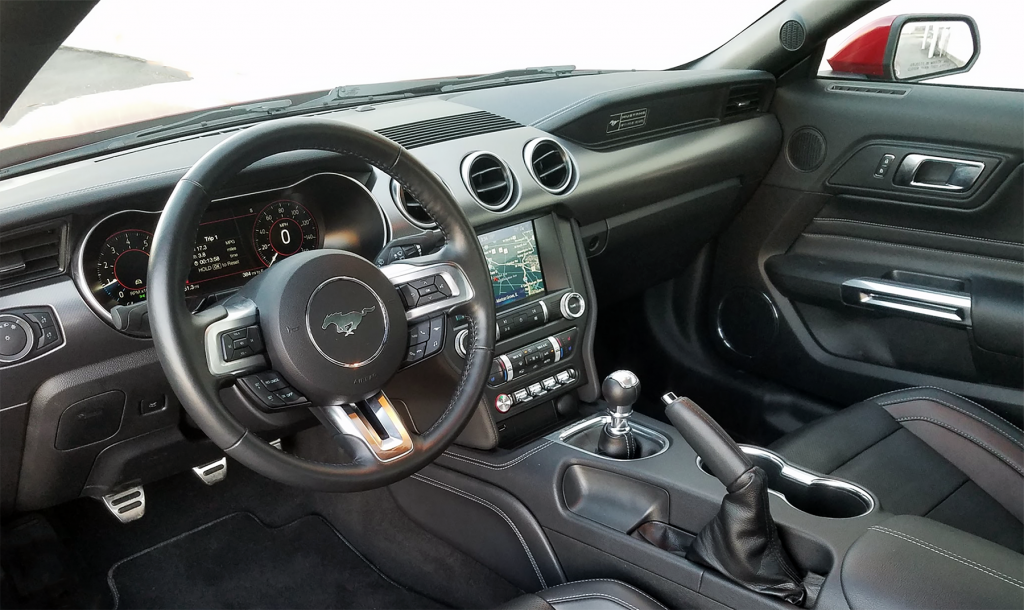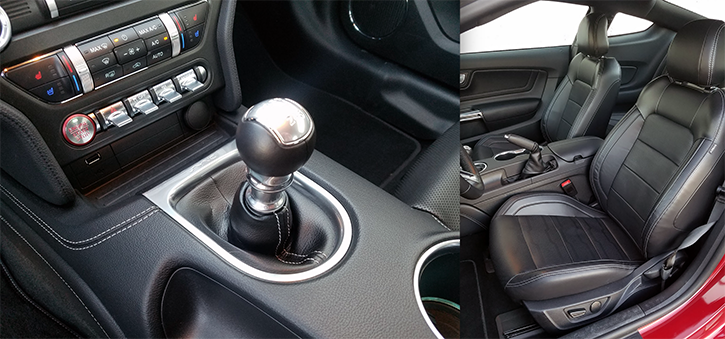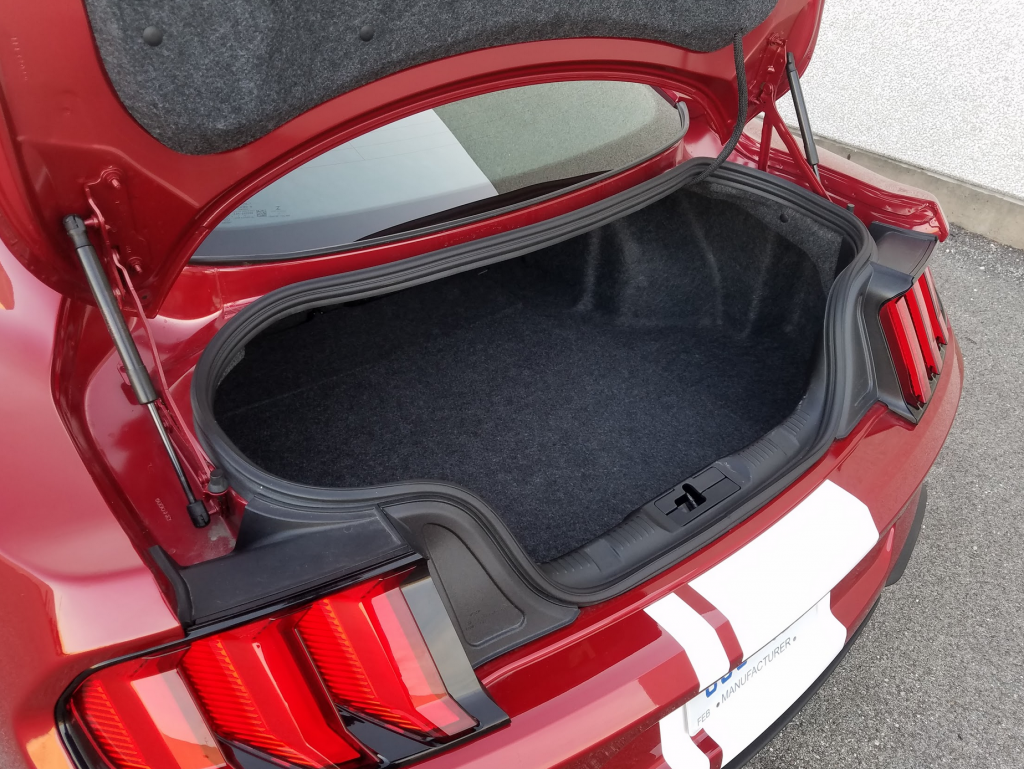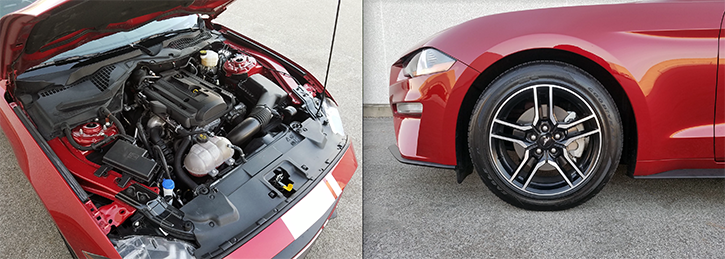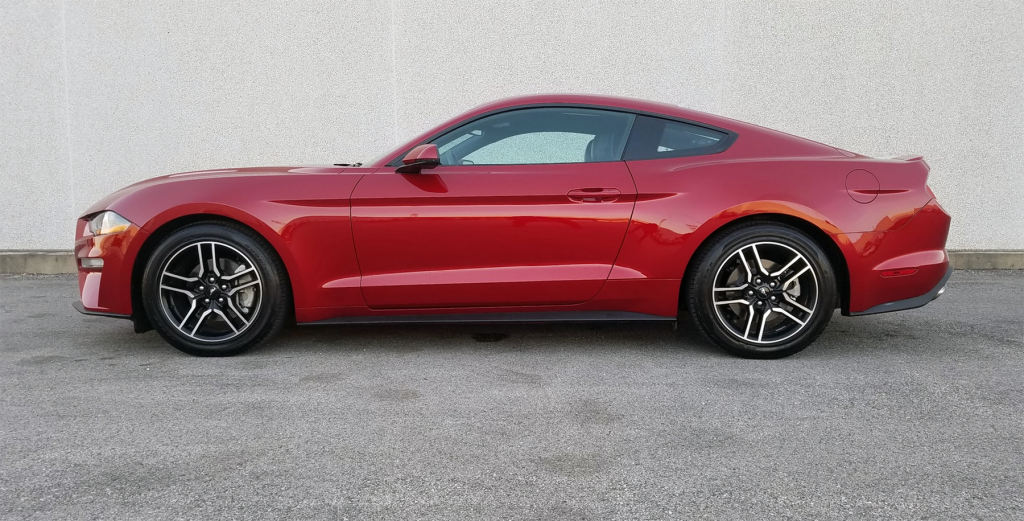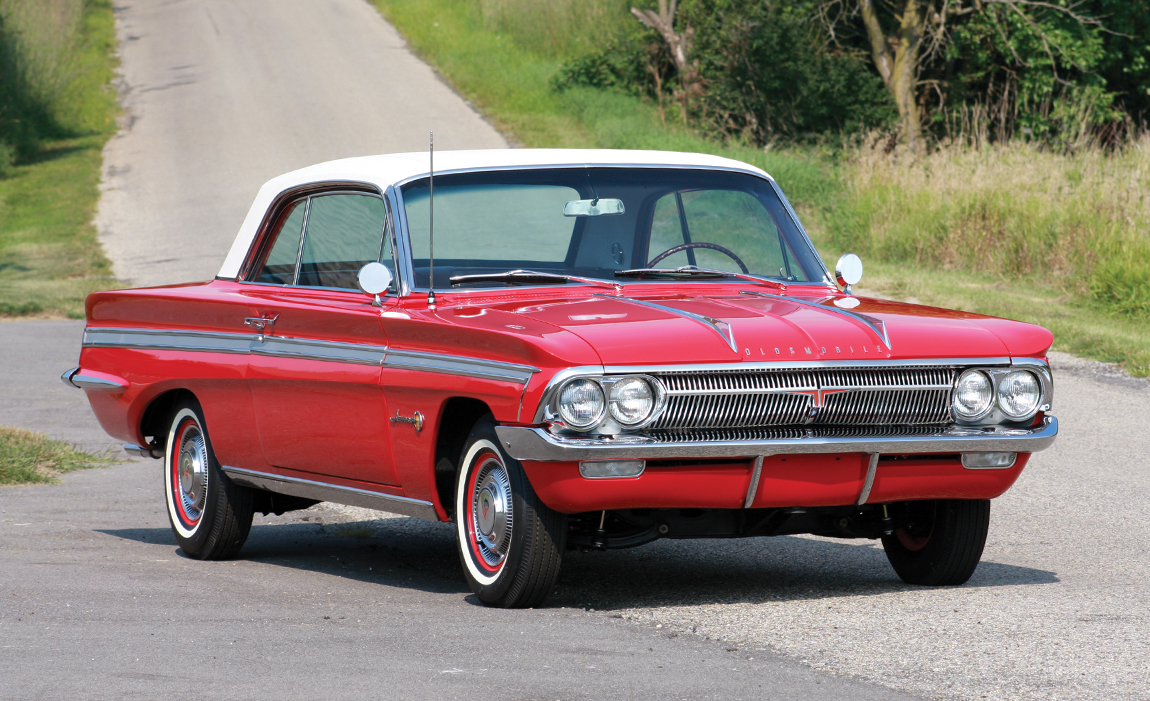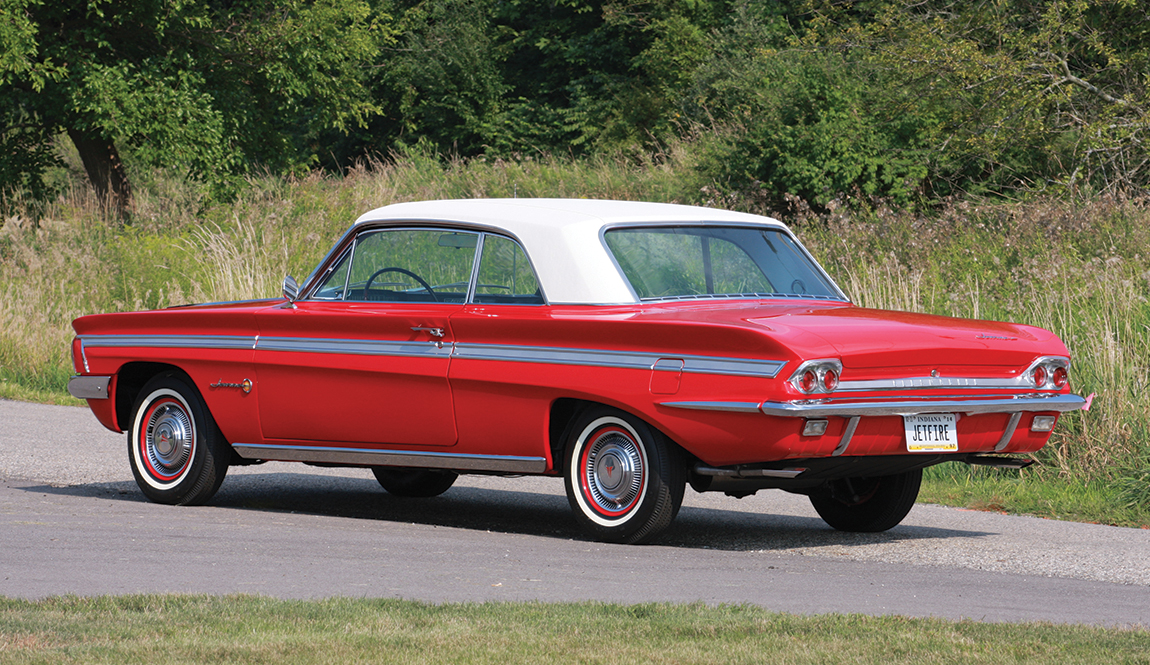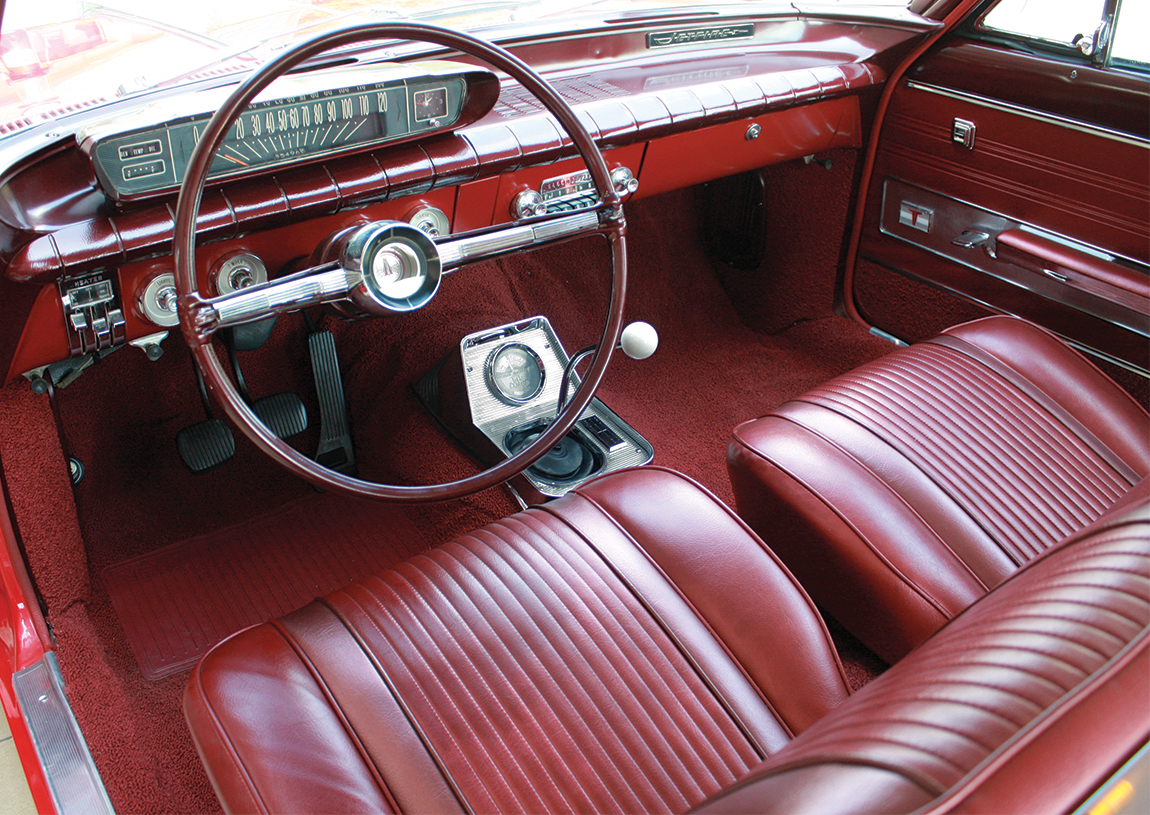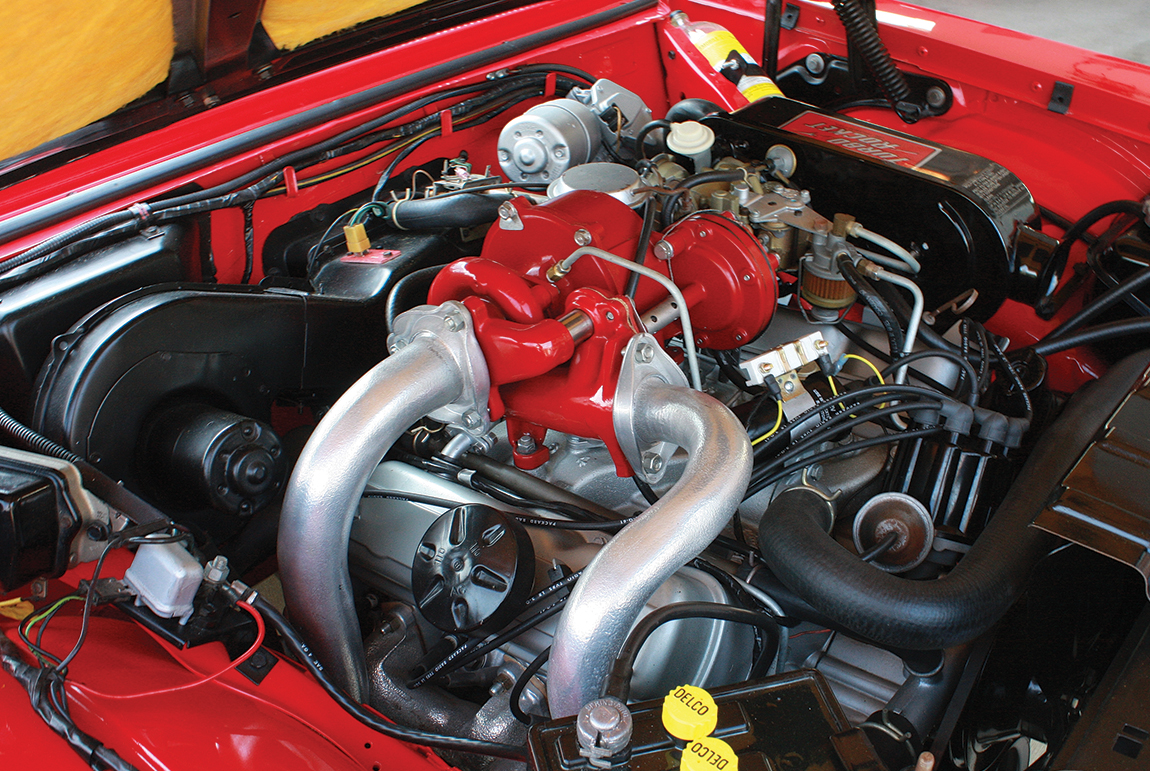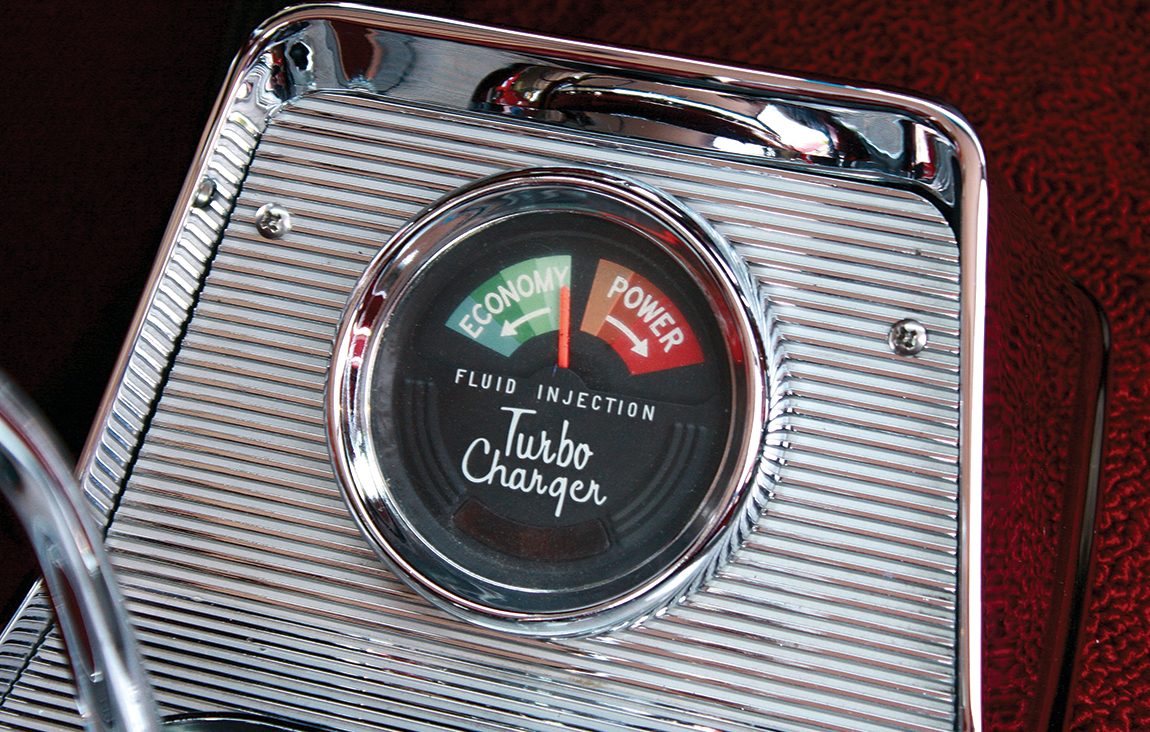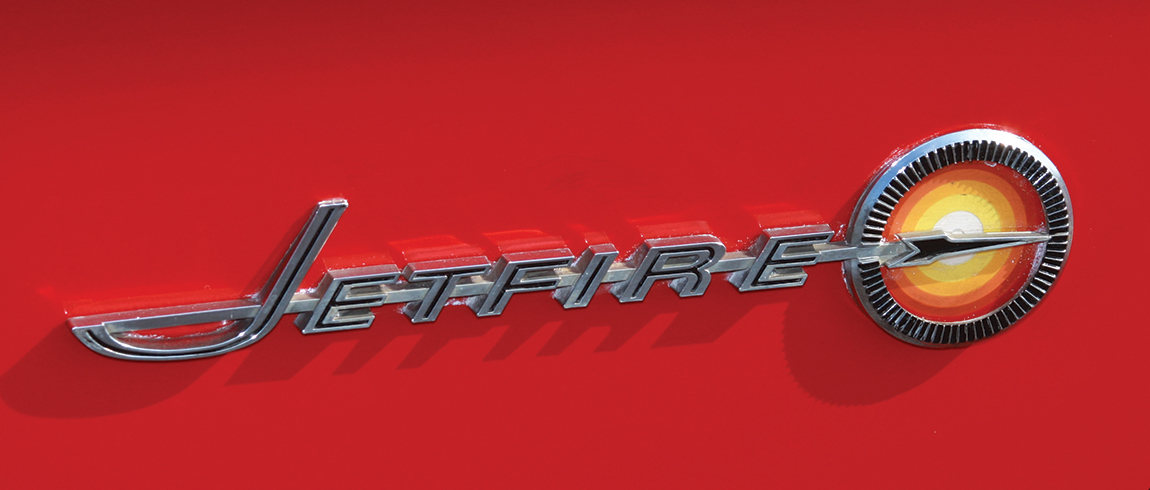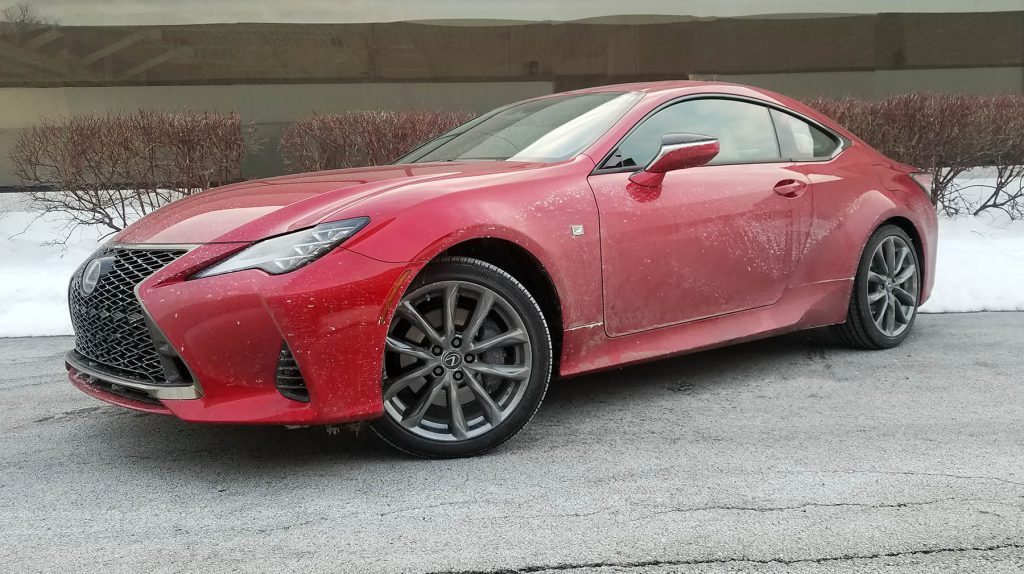
2021 Lexus RC 350 F Sport AWD in Infrared metallic red
2021 Lexus RC 350 F Sport AWD
Class: Premium Sporty/Performance Car
Miles driven: 265
Fuel used: 13.7 gallons
| CG Report Card | |
|---|---|
| Room and Comfort | B- |
| Power and Performance | B- |
| Fit and Finish | B+ |
| Fuel Economy | B- |
| Value | B |
| Report-card grades are derived from a consensus of test-driver evaluations. All grades are versus other vehicles in the same class. Value grade is for specific trim level evaluated, and may not reflect Consumer Guide's impressions of the entire model lineup. | |
| Big & Tall Comfort | |
| Big Guy | B- |
| Tall Guy | C- |
| Big & Tall comfort ratings are for front seats only. "Big" rating based on male tester weighing approximately 350 pounds, "Tall" rating based on 6'6"-tall male tester. | |
| Drivetrain | |
| Engine Specs | 311-hp 3.5L |
| Engine Type | V6 |
| Transmission | 6-speed automatic |
| Drive Wheels | AWD |
Real-world fuel economy: 19.3 mpg
Driving mix: 80% city, 20% highway
EPA-estimated fuel economy: 19/26/22 (city/highway combined)
Fuel type: Premium gas recommended
Base price: $51,130 (not including $1025 destination charge)
Options on test car: triple-beam LED headlamps ($1160), Mark Levinson 17-speaker 835-watt premium surround-sound audio system ($1080), Intuitive Parking Assist ($500), premium paint ($595), power moonroof ($1100)
Price as tested: $56,590
Quick Hits
The great: Acceleration; ride/handling combination
The good: Visibility; interior appointments
The not so good: Infotainment/climate controls; rear-seat room; cabin storage
More RC price and availability information
CG Says:
Is the Lexus RC 350 F Sport a sporting car that wants to be luxurious or a luxury car trying to be sporty?
The RC product line—turbo 4-cylinder 300, V6 350, and V8 F—is part of Consumer Guide’s premium sporty/performance-car class. The sole body style continues to be that of a tidy sport coupe on a 107.5-inch wheelbase. A roofline that touches down a few inches short of the end of the decklid keeps it from being a true fastback, but that’s an academic distinction that’s hard to keep in mind when you’re looking through the backlight via the rearview mirror—or riding in a rear seat.

Even with a coating of road salt and grime thanks to Chicagoland’s merciless winter roads, the RC’s styling turns heads.
Clearly, then, the RC 350 F Sport comes in the right wrapper for a hot car. It’s just that the goods inside seem to dial down the temperature.
CG’s test car was an all-wheel-drive 350 F Sport, which for 2021 has a starting price of $52,155 including delivery. Standard equipment consists of features like Lexus Safety System + driving aids, rear-obstacle detection, Enform telematics and apps, Apple CarPlay and newly added Android Auto smartphone compatibility, power-adjustable 10-way driver’s seat and 8-way passenger seat, NuLuxe leatherette upholstery, automatic dual-zone climate control, push-button starting, and touchpad-controlled Lexus Multimedia System with a 7-inch color display screen and 10-speaker audio.
Test Drive: 2020 Ford Mustang EcoBoost
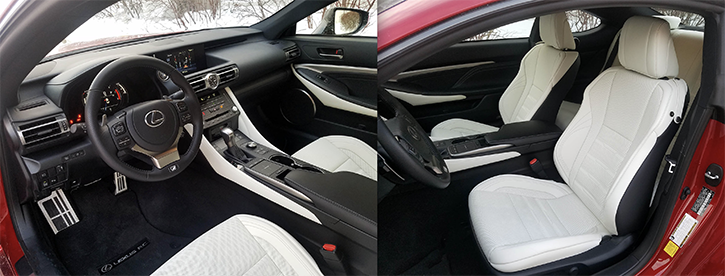
The RC’s interior is nicely assembled from high-quality materials and has a sporty, upscale look and feel. The front seats are comfortable and supportive, but the low-slung roofline means headroom is stingy for tall occupants.
The things that turn a base RC 350 into an F Sport mostly check off appearance and convenience boxes. The more-stoutly bolstered front sport seats are heated and ventilated, and there’s a memory-settings function for the driver’s seat, exterior mirrors, and tilt/telescoping steering wheel. The steering and shift knob are wrapped in perforated leather. The interior sports dark-gray “Streamline” trim and aluminum-face pedals; the exterior shows a distinct grille surface, 19-inch alloy wheels, and rain-sensing windshield wipers. Nods to performance are confined to an expanded line of drive modes including “Sport S,” “Sport S+,” and “Custom,” as well as an F SPORT–tuned fully independent suspension with electronically adjustable shock absorbers.
Test Drive: 2020 Nissan 370Z NISMO
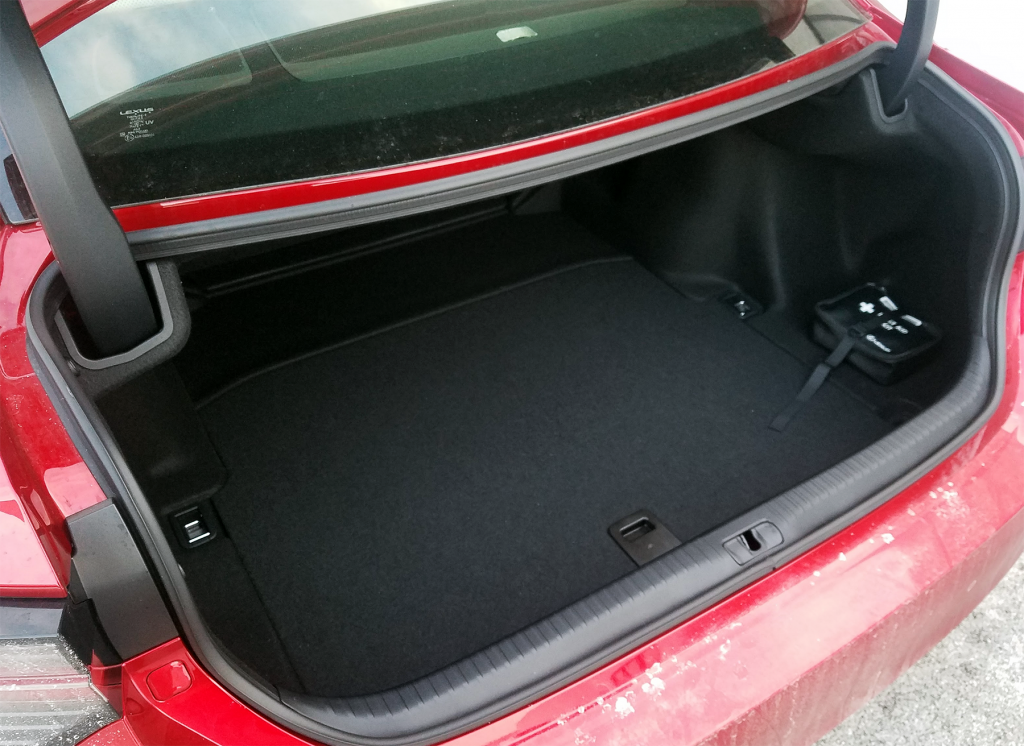
There’s a so-so 10.4 cu. ft. of cargo volume in the RC’s trunk, but the space is nicely finished, and the trunk-lid hinges are covered so they don’t crush cargo.
All RC 350s are powered by a 311-horsepower 3.5-liter V6 engine, and those with the full-time AWD system pair it with a 6-speed automatic transmission with paddle shifters. Standing-start acceleration and highway cruising, while lively, aren’t exceptional in sporty-car terms. Ride is firm but never harsh in “Normal” mode. Dialing up to Sport S+ firms up steering resistance and stiffens the suspension to reduce body lean, with the effect that passengers will feel a little more grit in the ride, but the car’s overall reflexes remain more relaxed than those of true performance coupes. EPA fuel-mileage estimates of 19 mpg in the city, 26 mpg on the highway, and 22 combined were more or less borne out in our testing. Note that the rear-drive 350 F Sport, which starts for $1610 less than the test car, comes with an 8-speed automatic and slightly larger-diameter front disc brakes, and can be ordered with rear-wheel steering and a Torsen limited-slip rear differential not available on the all-wheeler.
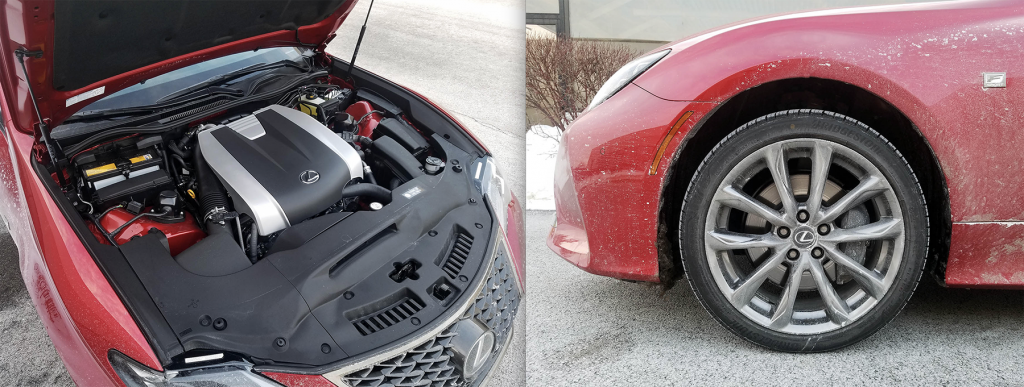
RC 350s are powered by a 311-hp 3.5-liter V6. Rear-wheel drive models get an 8-speed automatic transmission, and AWD models like our test car have a 6-speed automatic. F Sports come standard with 19-inch alloy wheels.
Most of what’s new for the ’21 RCs are Black Line Special Edition 300 and 350 F Sports and a Fuji Speedway Edition for the 472-horse RC F. Otherwise, the general package is what it has been since the RC’s 2015 debut. Front-seat occupants sit low but enjoy decent head- and legroom. In back there is room for a pair of smaller-stature folks, providing those in front of them don’t need to track all the way back. Soft-touch materials are readily apparent around the cabin. The only fly in the ointment in terms of controls is the infotainment system’s remote touchpad controller on the console. For personal storage, the console box isn’t terribly deep and the glove box is similarly modest, but there are long pockets in both doors. A flat, wide trunk has enough space for luggage for two on a short trip—or a week’s worth of their groceries.
The five options that pushed the final price of our test car to $56,590 only furthered its luxury level. The RC 350 F Sport is pleasant to drive. Is it truly sporty? No. But it is a Lexus.
Test Drive: 2020 Cadillac CT4-V
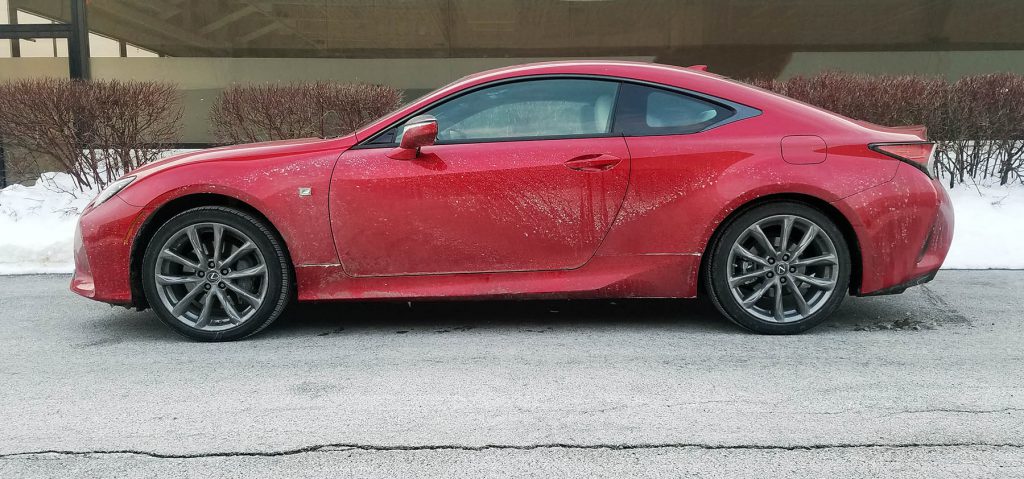
The basic Lexus RC is starting to feel a bit long in the tooth these days, but it continues to offer a unique mix of dramatic styling, classy cabin trimmings, and a grand-touring-coupe driving personality.
Listen to the very entertaining Consumer Guide Car Stuff Podcast
2021 Lexus RC 350 F Sport Gallery
(Click below for enlarged images)
